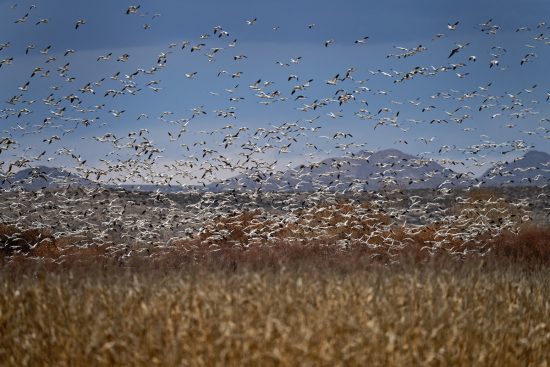
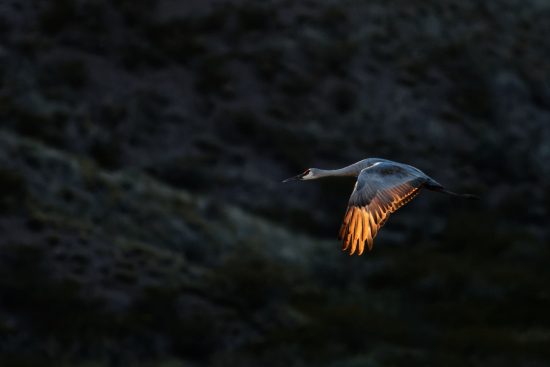
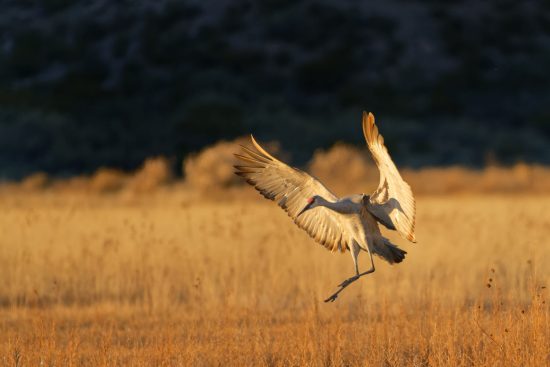
Bosque del Apache Wildlife Refuge, New Mexico with the Nikon D850 and Sigma 150-600mm f/5-6.3 DG OS HSM Sport lens ($1,799) by Nikhil Shahi (Website | Facebook | Instagram):
I first heard about the Sandhill Cranes at Bosque del Apache Wildlife Refuge last year. I came across some amazing images of these cranes, bathed in gorgeous New Mexico light, and thought that I definitely need to head there in the near future. Well, I finally got a chance to go to Bosque during the last week of November, and let me tell you, it really lives up to the hype – a photographer’s paradise!
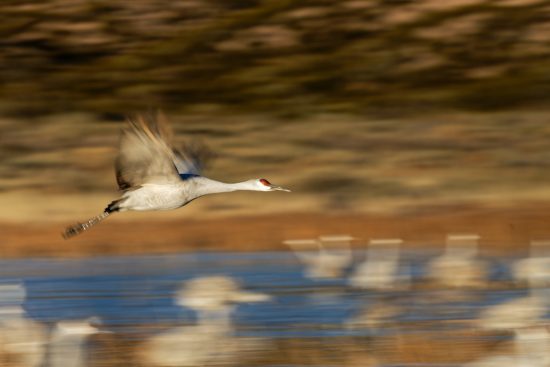
The 57,000 acre refuge is situated between the Chupadera Mountains to the west and the San Pascual Mountains to the east. During the fall and winter months, the refuge is home to tens of thousands of migratory Sandhill Cranes and Snow Geese, besides the other birds that reside at the refuge. The refuge hosts an annual ‘Festival of the Cranes’ event around the middle of November, which marks the beginning of the migration season.
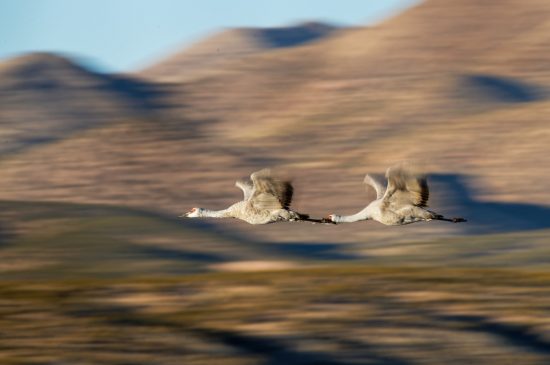
The peak time to visit Bosque for photography is from the last week of November through the second or third week of December. Do note that a lot of pro photographers lead workshops during the month of December, so expect the locations to be crowded. From my perspective, there is enough room to accommodate everyone, unless you have a specific spot that you like – in which case you might want to arrive early to claim that location.
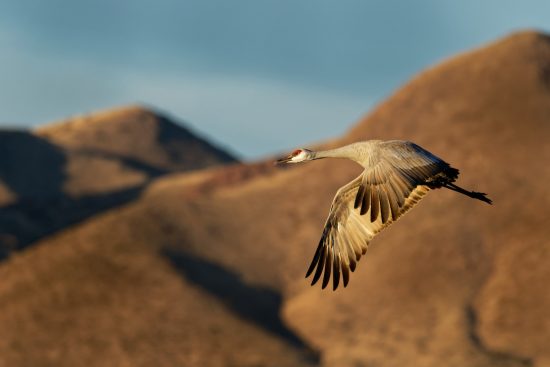
I would begin my day by leaving my hotel in Socorro, around an hour and a half before sunrise. The drive from Socorro to the refuge takes around 30 minutes. This way I arrived at the refuge well before sunrise to allow me to get a good spot and setup my gear. Be advised that it can get very cold at the refuge early morning (it was around 18F or -8C last week), so definitely bundle up in layers and carry some hot coffee or other beverage. I love sipping on some hot coffee as dawn breaks in a gorgeous setting such as Bosque.
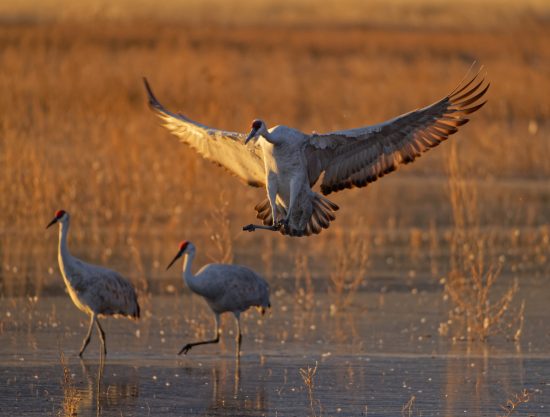
Location(s) for Dawn/ Sunrise photography: Enter the refuge and take the first left at the 4-way just inside the refuge. Drive on until you reach the ‘Flight Deck’ parking lot to the right. This is a pretty well known location for early morning photography. I personally prefer to drive past the ‘Flight Deck’ for approximately a hundred feet, and park just before the road becomes one-way (in the opposite direction – so one can’t enter it anyway). Choose a spot in that vicinity and then take the dawn and maybe sunrise photos. If you don’t have enough birds close to you, you will definitely get the early morning color over the pond and some flying birds.
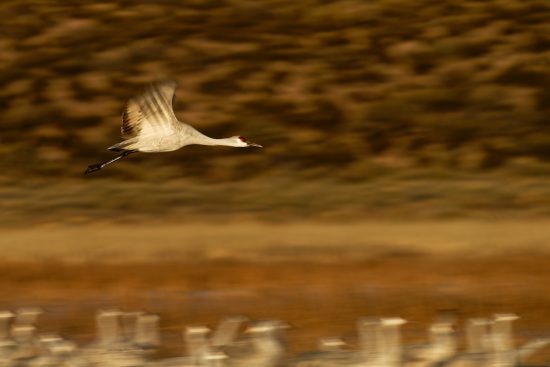
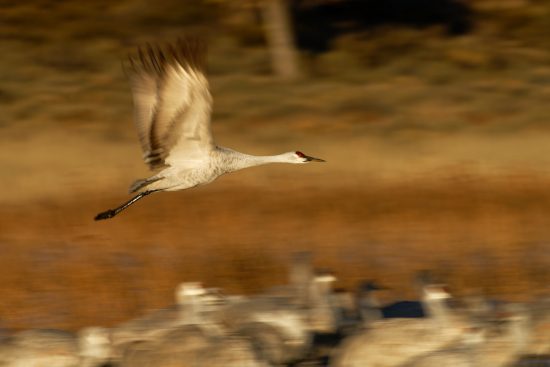
Location(s) for Sunrise until an hour after Sunrise: Once you have shot the birds by the ‘Flight Deck’, head straight to the crane pools. This is the water body that you will pass on your way to the refuge – I believe it’s around 3.5 miles or so from the main paid entrance to the refuge. So head out of the main entrance, make a right and get back on the road that you came in on from San Antonio. Drive around 3.5 miles until you see a big parking lot to your left alongside a water body. The cranes and snow geese roost here during the night and you will be able to get spectacular photos of them taking off a little after sunrise (when they head to the corn fields in the refuge). The lighting at this time is incredible. Try different photographic techniques like panning (use a shutter speed of around 1/100 of a second when you first start experimenting and then drop it to around 1/30s when you get good at panning).
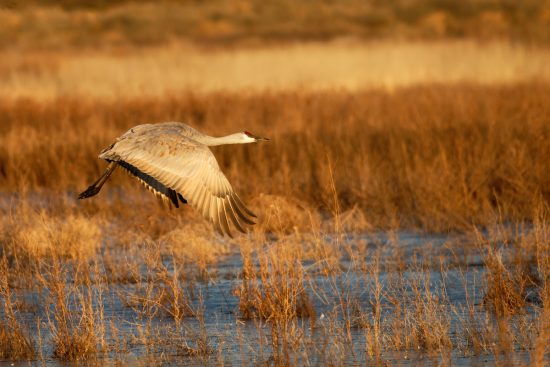
After you have shot for an hour there, definitely head back into the refuge, enter the refuge and then drive straight to do the North Loop tour. Here you will find plenty of spots where these cranes will be feeding (some are very close and some a little distant). For me personally, the light turned too harsh two to three hours after sunrise and I would return to my hotel in Socorro. I would then head back to the Crane Pools (the ones outside the refuge) around an hour and a half before sunset. The birds would start to come back from the corn fields to roost, around 45 minutes to an hour before sunset. The evening light is gorgeous and you will get great shots of the cranes landing on the water.

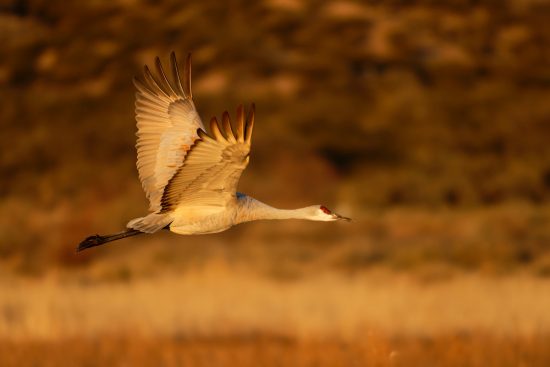
Finally, be aware that wind direction is really important when photographing birds. The birds will fly into the wind while taking off and landing. So position yourself such that you get the best angle. You definitely don’t want to get their rear ends in the frame if the wind is from the front, blowing onto your face. Having said that, even if the wind is from the front, the birds tend to circle before landing – that’s when you can get a good shot if the wind is not cooperating.
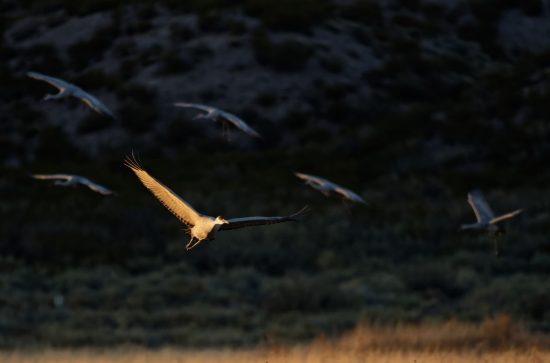
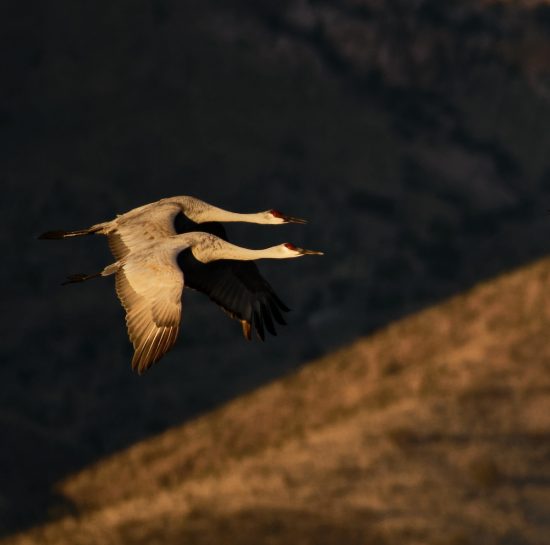
Bosque del Apache is an amazing place and one that I highly recommend you visit, especially if you like bird photography. The lighting there is gorgeous and one has a lot of opportunities to get some great shots. I personally used a Sigma 150-600mm Sports lens for my photographs and found it to be more than adequate to capture some great photos. Most importantly – Have Fun!
If you have an interesting idea for a guest post, you can contact me here.







